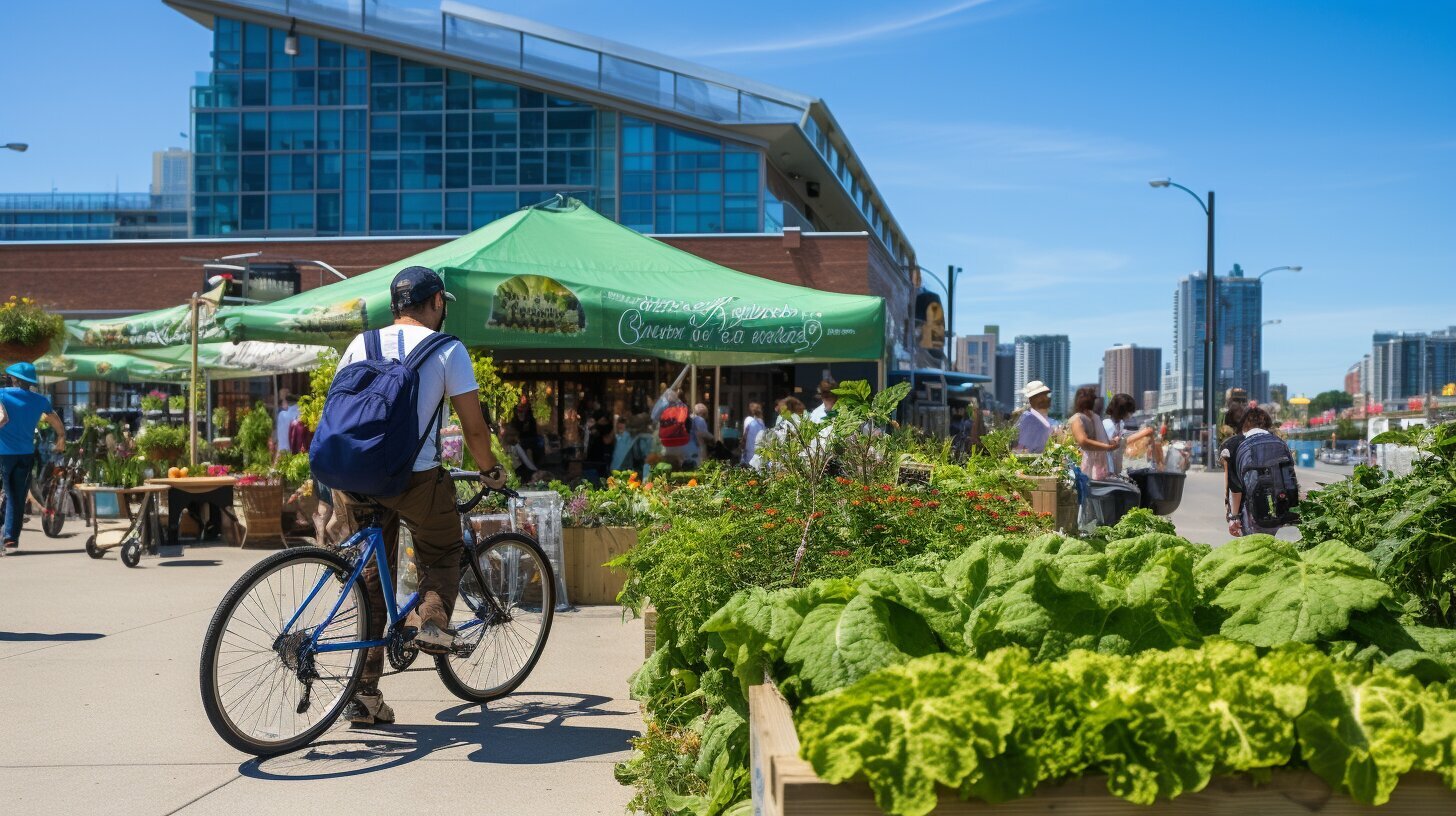Hello there! Are you curious about how to live a zero waste life? It’s easier than you think! Adopting a zero waste lifestyle means reducing your environmental impact and minimizing waste. In this article, I’ll share ten simple tips that will help you get started on your zero waste journey.
Living a zero waste life doesn’t mean sacrificing comfort or convenience. Rather, it’s about making small, sustainable changes that over time, lead to a more eco-friendly lifestyle. With these tips, you can reduce your environmental footprint and inspire others to do the same.
Key Takeaways:
- Living a zero waste life means reducing your environmental impact
- Adopting sustainable habits doesn’t mean sacrificing comfort or convenience
- Small changes can lead to a more eco-friendly lifestyle
Start with Refusing Single-Use Items
One of the easiest ways to reduce waste is by refusing single-use items. This includes items like plastic bags, straws, and utensils. I always carry my reusable shopping bags and utensils with me, so I never have to use the single-use alternatives.
It’s not always easy to avoid single-use items, especially when you’re out and about, but it’s worth it to try. You can start by bringing a reusable water bottle and coffee cup with you when you leave the house. Instead of using plastic wrap and sandwich bags, you can use reusable containers.
| Single-Use Item | Reusable Alternative |
|---|---|
| Plastic Bags | Reusable Shopping Bags |
| Plastic Straws | Reusable Metal or Glass Straws |
| Plastic Utensils | Reusable Utensils |
By refusing single-use items, we can reduce the amount of waste we produce and protect our planet.
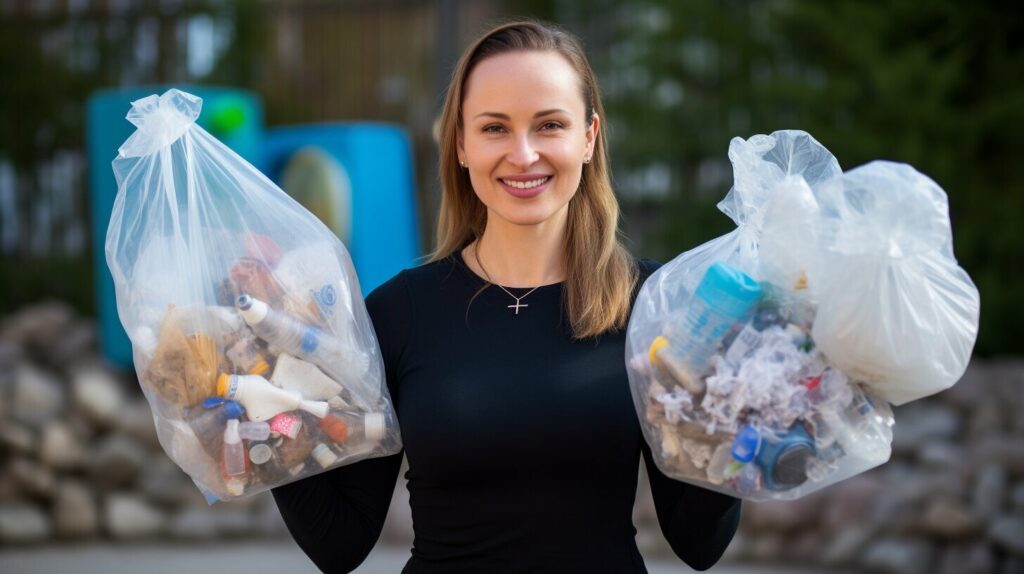
Embrace a Minimalist Lifestyle
Living a minimalist lifestyle can greatly contribute to a minimal waste lifestyle. When we have fewer possessions, we tend to consume less, which ultimately means fewer items being discarded.
Consider focusing on quality over quantity. Invest in high-quality items that will last longer rather than purchasing cheap items that will end up in the landfill. When shopping, stick to items that you truly need and will use often. This mindset can not only save you money but also help reduce your waste output.
Another way to embrace a minimalist lifestyle is to declutter and donate items that you no longer need. Instead of tossing them in the trash, consider giving them a second life by donating to a local charity or selling them online.
Benefits of a Minimalist Lifestyle
Embracing a minimalist lifestyle can have many benefits beyond waste reduction. It can lead to decreased stress, increased productivity, and a clearer mind. With fewer possessions and less clutter, you may find yourself feeling more organized and focused.
By consuming less, you can also reduce your carbon footprint and contribute to a more sustainable future. It’s a win-win situation that not only benefits you but also the planet.

As Joshua Becker said, “Minimalism is the intentional promotion of the things we most value and the removal of everything that distracts us from it.” By focusing on the things that truly matter to us and removing distractions, we can live a more fulfilling life while also doing our part to reduce waste.
Avoid Food Waste
Did you know that in the United States, about 40% of all food goes to waste? Not only is this a financial burden, but it also has a significant impact on the environment. Fortunately, there are simple steps we can take to reduce food waste and make a positive impact.
Plan Meals and Shop Smart
One of the easiest ways to avoid food waste is to plan your meals ahead of time and make a shopping list. By doing so, you can avoid buying unnecessary items and ensure that you only purchase what you need.
When you’re at the grocery store, be mindful of expiration dates and don’t buy more than you can realistically consume. It’s also a good idea to opt for imperfect produce, as these fruits and vegetables are often just as nutritious but may be passed over by other shoppers.
Store Food Properly
Proper food storage can go a long way in preventing food waste. Make sure to store perishable items like meat and dairy in the refrigerator or freezer, and consider investing in airtight containers to keep produce fresh for longer periods of time.
It’s also a good idea to keep an eye on your pantry and regularly check expiration dates. By rotating items and using older products first, you can reduce the likelihood of food going to waste.

Get Creative with Leftovers
Leftovers are a great way to save time and reduce waste, but they can quickly become boring if you’re eating the same thing every day. Get creative and find new ways to use your leftovers – for example, turn last night’s roasted vegetables into a delicious soup, or use leftover chicken to make tacos for dinner.
Donate Excess Food
If you find yourself with excess food that you can’t consume, consider donating it to a local food bank or shelter. Many organizations accept non-perishable items, as well as fresh produce and other perishable items that are still in good condition.
By taking these simple steps, we can all do our part to reduce food waste and create a more sustainable future.
Opt for Reusable Containers and Bags
One of the easiest ways to reduce waste is by opting for reusable containers and bags. Instead of using single-use plastics, I bring my own reusable bags to the grocery store and use glass or stainless steel containers for storing food leftovers. Not only is this environmentally friendly, but it also saves me money in the long run.
I also use reusable bags and containers when packing lunches or snacks for work. This not only allows me to reduce waste, but also to choose healthier, homemade options over pre-packaged, processed foods that come in wasteful packaging.
It’s important to note that reusable bags and containers come in a variety of materials, such as cotton, canvas, and silicone. When choosing reusable options, I opt for materials that are durable and easy to clean. This way, I can use them over and over again without having to constantly replace them.
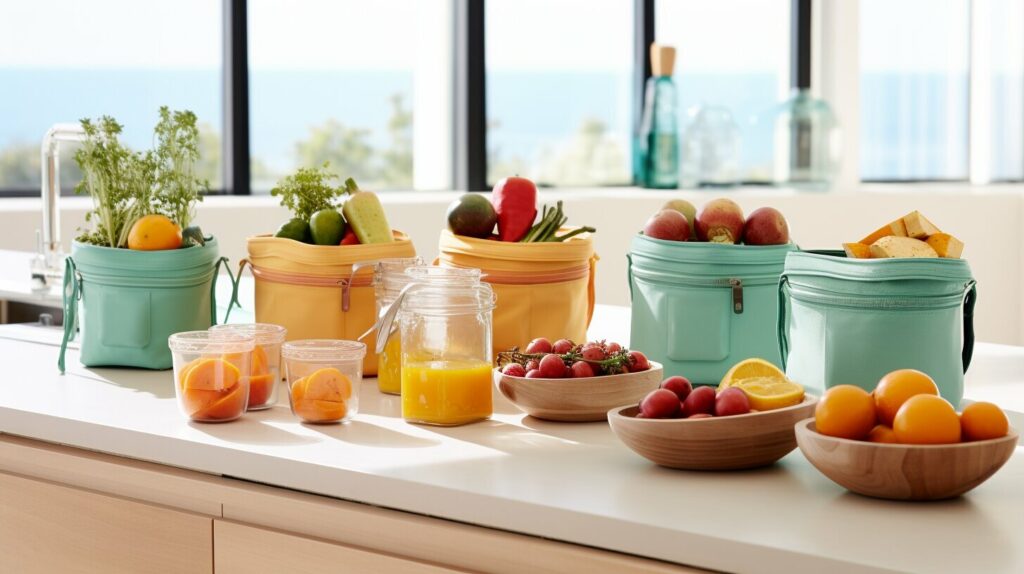
Compost Your Food Scraps
I love composting! It’s an easy and effective way to reduce food waste and help the environment. By composting food scraps, you can reduce your household waste by up to 30%!
To get started, you’ll need a compost bin or heap. Find a location with good drainage and air circulation, and make sure it’s convenient to access. Add a layer of browns (like twigs, leaves, or shredded paper) to the bottom of the bin, then start adding your food scraps.
| What to compost | What not to compost |
|---|---|
| Fruit and vegetable scraps | Dairy products |
| Coffee grounds and filters | Meat, fish, and bones |
| Eggshells | Fats and oils |
| Grass clippings and yard waste | Plastic and metal |
Keep adding layers of greens (like fruit and vegetable scraps) and browns to your compost heap, and turn it over every few weeks to aerate it. You’ll know it’s ready to use when it looks like rich, dark soil– this can take anywhere from a few weeks to a few months, depending on your setup and climate.
Composting is a great way to give back to the earth and reduce your carbon footprint. Plus, it’s a fun project to do with kids and can teach them about sustainability and waste reduction.
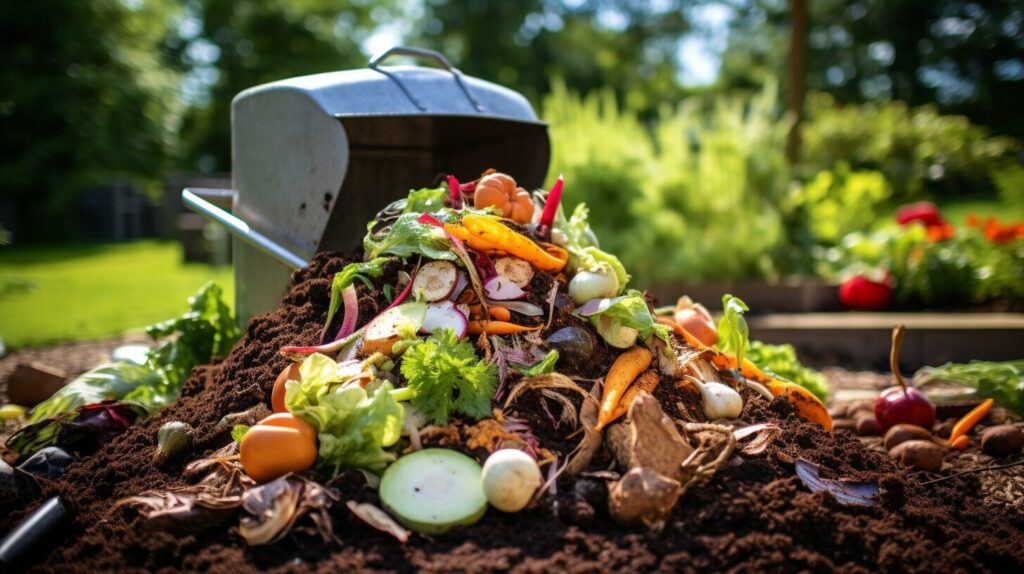
Say No to Disposable Water Bottles
One of the easiest ways to reduce waste is by saying no to disposable water bottles. Instead, invest in a reusable water bottle made of glass, stainless steel, or BPA-free plastic. These materials are durable, long-lasting, and easy to clean.
According to the Container Recycling Institute, Americans use about 2.5 million plastic bottles every hour, and only about 27% are recycled. By using a reusable water bottle, you can significantly reduce your impact on the environment and save money in the long run.

When you’re on the go, make sure to bring your reusable water bottle with you. There are many options available that are compact and easy to carry, making it simple to stay hydrated throughout the day. If you forget your reusable bottle, look for water fountains or refill stations in your area.
By saying no to disposable water bottles, you can help reduce the amount of waste in landfills and oceans, and protect our planet for future generations.
Shop Secondhand and Donate
One of the easiest ways to reduce waste is by shopping secondhand and donating items we no longer need. Not only does this help the environment, but it also supports local thrift stores and charities. Before buying something new, consider checking out a thrift store or online secondhand shop.
Thrift stores and online marketplaces like Poshmark and Depop offer a wide variety of clothing, furniture, and household items at a fraction of the cost of buying new. By purchasing used goods, we can reduce the demand for new production and keep items out of landfills.
Additionally, donating items we no longer need ensures that they have a chance to be reused instead of being thrown away. Goodwill, Salvation Army, and many local charities accept donations of clothing, furniture, and household items. Before throwing something away, consider if it can be donated to someone in need.
| Tip: | Visit your local thrift store or neighborhood garage sale to find unique items and support your community. It’s amazing what treasures you can find when you take the time to look! |
|---|
Reducing Waste, Helping Others
Shopping secondhand and donating items not only reduces waste, but it also has a positive impact on our communities. By supporting local thrift stores and donating to charities, we can help others in need and reduce our impact on the environment.

Choose Sustainable Packaging
When shopping for groceries or other products, choose items that are packaged in sustainable materials such as glass, metal, or paper rather than plastic. Avoid single-use plastic packaging whenever possible, as it is one of the most harmful materials to the environment and can take hundreds of years to decompose. Look for products with minimal packaging or packaging made from recycled materials.
It’s also important to properly dispose of any packaging you do use. Check with your local recycling program to see which materials can be recycled in your area and make sure to clean and sort your recyclables to ensure they don’t end up in a landfill.
If you’re looking for even more sustainable packaging options, consider using reusable containers or bags when shopping. Many grocery stores offer bulk sections where you can bring your own containers to fill with items like nuts, dried fruits, and grains. This can save a significant amount of plastic waste from entering the environment.
| Material | Pros | Cons |
|---|---|---|
| Glass | Durable, non-toxic, recyclable | Heavy, prone to breaking |
| Metal (aluminum, steel, tin) | Recyclable, durable, lightweight | Can be energy-intensive to produce |
| Paper/cardboard | Recyclable, biodegradable, renewable resource | Not as durable as other materials |
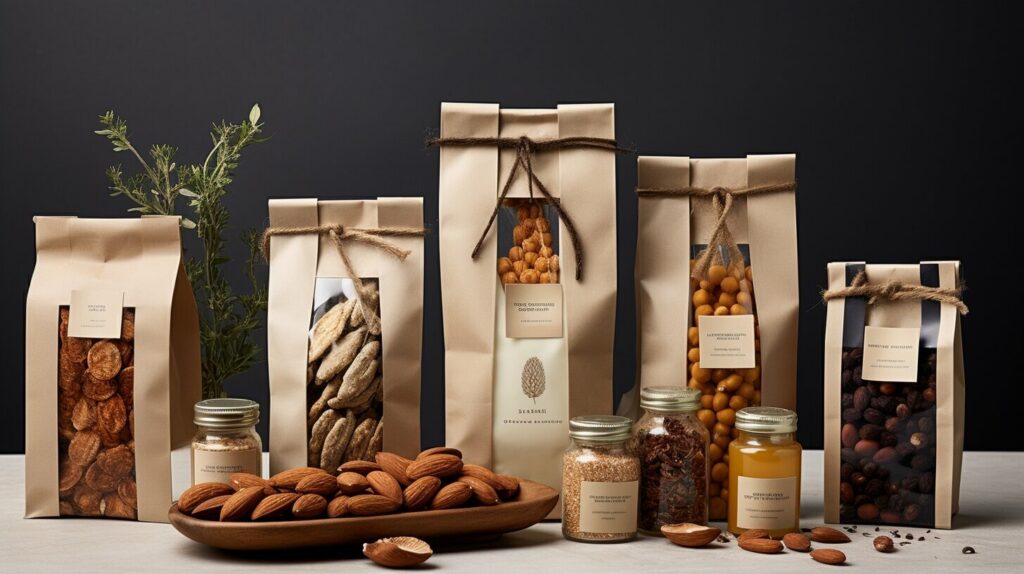
By choosing sustainable packaging options and properly disposing of them, we can reduce the amount of waste we produce and help protect the environment.
Practice Mindful Consumption
One of the most important things I’ve learned in my journey toward zero waste living is the importance of mindful consumption. Mindful consumption means being conscious of the products I buy and their impact on the environment. Before making a purchase, I ask myself a few questions:
- Do I really need this?
- Is there a more sustainable alternative?
- What is the environmental impact of this product?
By asking these questions and making intentional choices, I’ve been able to significantly reduce my consumption and waste.
Another way to practice mindful consumption is to support companies that prioritize sustainability. Look for brands that use eco-friendly materials, have transparent supply chains, and prioritize waste reduction. Additionally, buying products in bulk can reduce packaging waste and save money in the long run.
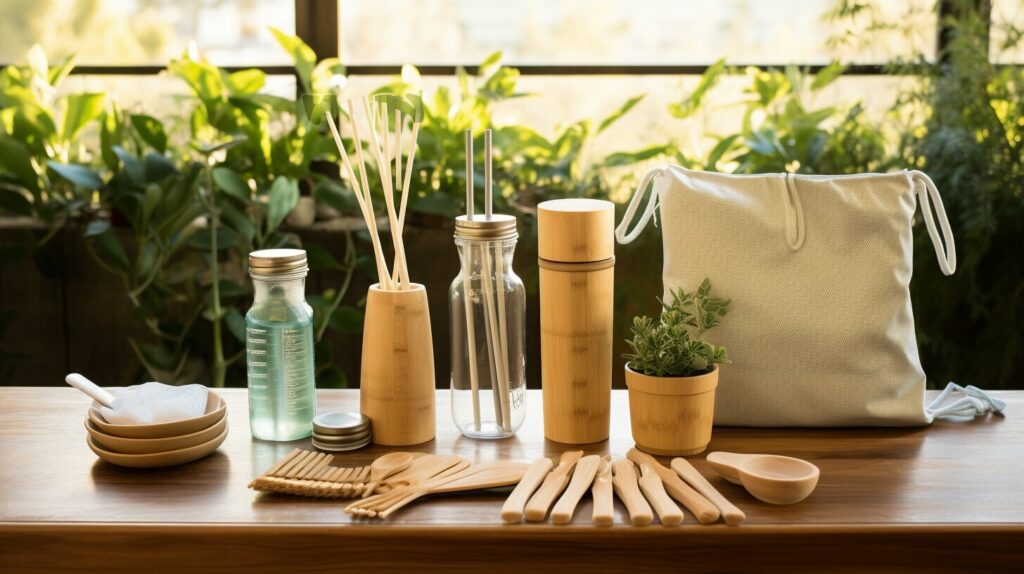
Remember, every purchase we make has an impact on the environment. By practicing mindful consumption, we can reduce waste and make a positive impact on the planet.
Conclusion
Incorporating these easy zero-waste practices in my life has not only helped me reduce my environmental footprint, but has also saved me money and simplified my daily routine. By refusing single-use items, embracing a minimalist lifestyle, avoiding food waste, opting for reusable containers and bags, composting food scraps, saying no to disposable water bottles, shopping secondhand and donating, choosing sustainable packaging and practicing mindful consumption, I feel empowered to make a positive impact on the planet.
Join me on this journey towards waste-free living and let’s make sustainable choices one step at a time. By taking small actions, we can collectively make a big difference in preserving the health of our planet for generations to come.

